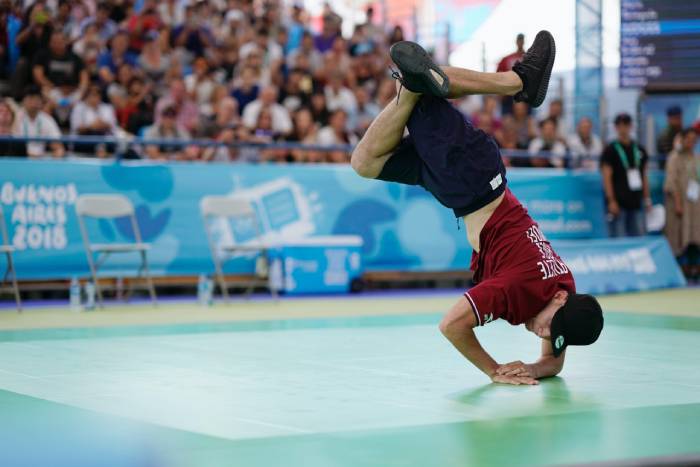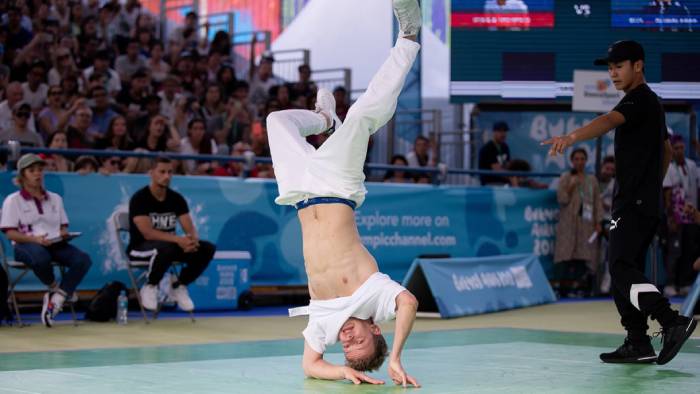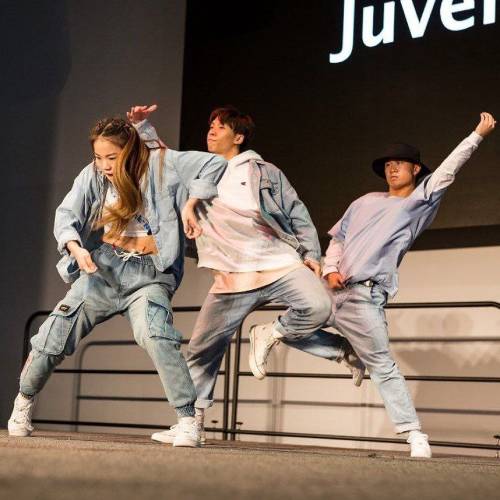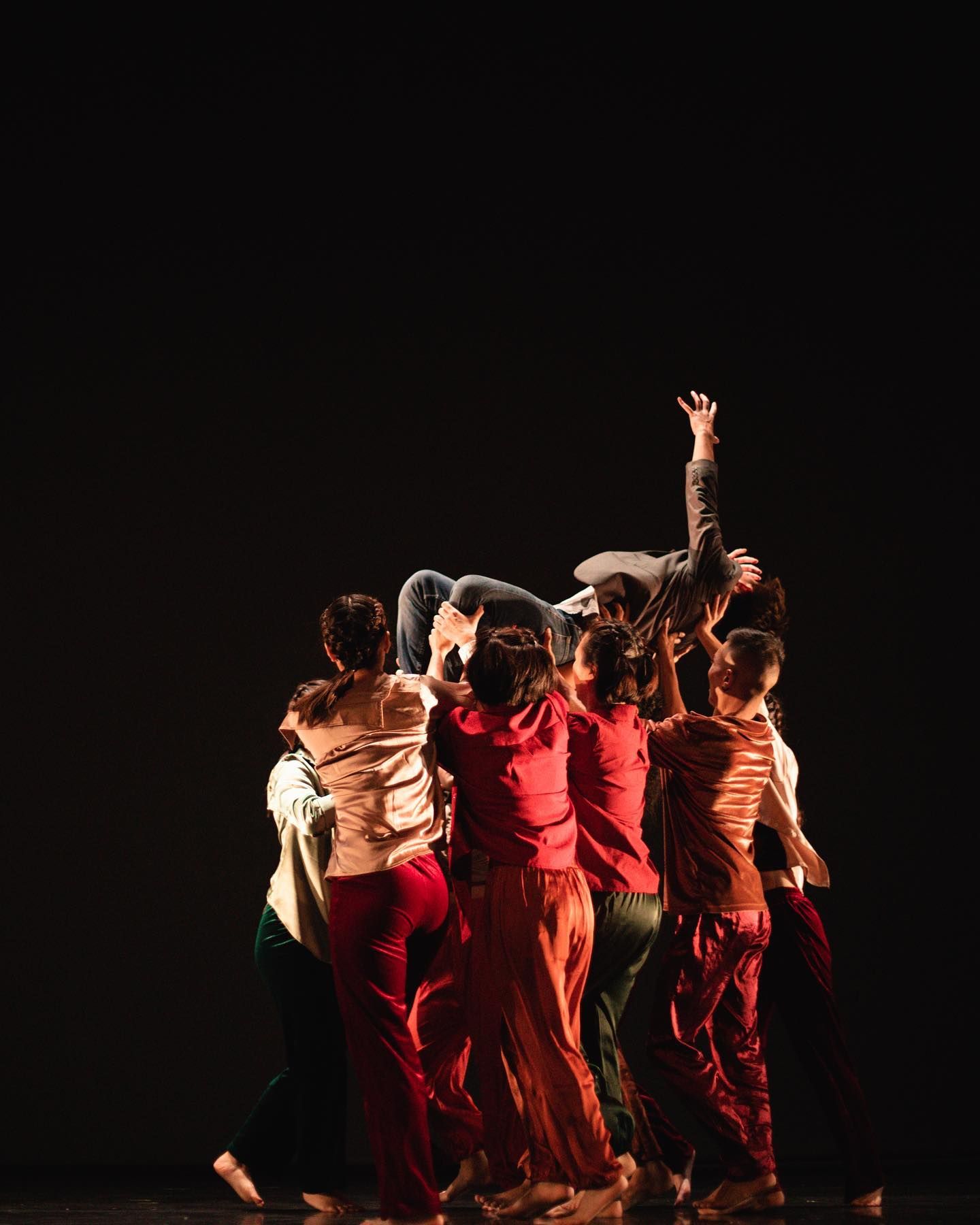This inclusion in the Olympics represents a new opportunity and a new platform that adds to the evolution of breaking over the years.

Courtesy of Paris 2024
In the 2018 Summer Youth Olympic Games in Buenos Aires, Breaking was introduced as a sport! Alongside other newly introduced sports such as skateboarding, BMX and rock climbing, this decision was part of the International Olympic Committee’s efforts to attract younger viewers with the globally popular subculture-based events.
Considering its success, Breaking will now be added to the Paris 2024 Summer Olympics and is another achievement B-boys and B-girls will be chasing.
After decades of international events, exchanges and competitions, it is still such a remarkable milestone to celebrate the dance scene! This inclusion in the Olympics represents a new opportunity and a new platform that adds to the evolution of breaking over the years.
It will bring a bigger audience and more visibility to breaking, even possibly provisioning breakers with more scholarships and sponsorships. Beyond that, it also solidifies that breaking and dancing should be taken seriously while providing more insight into the life and regime of breakers.

Courtesy of Paris 2024
The Paris 2024 games will be fully gender equal, with 50% female and male participation. There will be a total of 32 athletes (16 B-Boys and 16 B-Girls) who will compete for the first-ever medals in Olympic breaking.
There will be a maximum of four athletes per National Olympic Committee (two per gender), while France has secured two (one per gender) for being the host country, and the Tripartite Commission will allocate four Universality places (two per gender).
To be eligible for a Universality place, athletes must participate in the Olympic Qualifier Series and finish in the top 32 in the final ranking. That leaves 26 quota places available, which will be allocated to athletes by name during the qualification period.
As part of the criteria, B-Boys and B-Girls must have been born on or before 31 December 2008.

Courtesy of Paris 2024
How can breakers qualify for these spots?
Athletes will be able to secure a spot through three different competitions — The 2023 World Championship, the Continental Games/Championships and the Olympic qualifier series.
The first two athletes to qualify will be the B-Boy and B-Girl who win the WDSF 2023 World Championship, which will take place in Belgium on the 23 and 24 September 2023. Next, a total of 10 athletes will earn their spots in the Continental Games or Continental Championships of their regions; they will be the highest-placed B-Boy and B-Girl in Africa, Europe, China, Chile and Oceania. However, if the winners of these events have already secured their quota through the World Championship, the slot will be allocated to the next ranked eligible athlete who has not yet qualified.
Finally, from March to June 2024, the Olympic Qualifiers Series will take place and the B-Boys and B-Girls who have not yet qualified will have their last opportunity to fight for the final 14 quotas available.
Once we reach the Summer Olympics in Paris, there will be two breaking events, one for the men and one for the women. In each event, 16 breakers will fight to advance to the next rounds in face-to-face solo battles and eventually for the gold medal in the finals.

Courtesy of Taipei Times
How will the B-boys and B-girls be judged?
The Olympics Breaking will use the Trivium judging system, which was created for the debut of breaking at the 2018 Youth Olympics. It is a digital scoring platform that allows judges to react in real time to breakers’ physical, artistic and interpretative qualities.
There will be five judges to score each breaker on the following categories: their creativity, personality, technique, variety, performativity and musicality. The scores can be modified throughout the battle, according to how they respond to their opponent.
For example, their scores can be lowered if they “bite” their opponent. Misbehavior and other unsportsmanlike conduct can also lower a breaker’s score.
As the scoring is comparative, it would be strategic to study their opponents’ ahead of time to really bring it onto the dancefloor. This is according to Niels “Storm” Robitzky who co-created the system. This is because you’d have an advantage against your opponents when you understand their strengths and weaknesses.

Courtesy of Global Times
While all of this is such big news, breakers have expressed some concerns with the progression. Amongst those concerns is the fear that making breaking competitive will dilute its essence and its culture.
There is also the fear that the intangible qualities of breaking such as passion and originality will be brushed aside and that the judges will only focus on the technical aspect of it.

Courtesy of The New York Times
However, Richard “Crazy Legs” Colón, the president of Rock Steady Crew and a pioneer in Breaking, spoke on this concern. It would be very important for prominent breakers like himself to work with the International Olympic Committee and the World Dance Sport Federation to ensure the Olympics breaking stays true to its roots.
It is still a positive step forward as long as the dancers remember our history and we keep supporting the events that have been around as part of the community’s growth. It is also great that dancers get to be involved in the planning and organising process; being able to provide input and create an impact instead of being left unheard.
So with all this exciting news, we truly look forward to seeing B-boys and B-girls in full gear in preparation for all the events leading up to the Summer Olympics in Paris 2024. And eventually, celebrate all the love, passion and glory of the next big breaking event on 9 and 10 August at the Place de la Concorde next year.
Keep a close eye on the Olympics journey and the full timeline of events coming up!
For more dance reads, click here.



